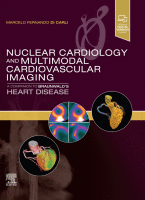Physical Address
304 North Cardinal St.
Dorchester Center, MA 02124

You’re Reading a Preview Become a Clinical Tree membership for Full access and enjoy Unlimited articles Become membership If you are a member. Log in here

Chapter 1 Question 1: C Question 2: D Question 3: A Question 4: B Chapter 2 Question 1: A Question 2: C Question 3: C Question 4: A Chapter 3 Question 1: D Question 2: C Question 3: B Question…

KEY POINTS ML and DL techniques are becomingly increasingly sophisticated. AI-based algorithms can be used to improve the accuracy of image processing, segmentation, and quantification and also allow for more robust automation. AI can be used to improve image quality…

KEY POINTS PAD is prevalent and associated with high morbidity and mortality but is frequently underdiagnosed. Conventional approaches to diagnosis, including ABI and angiography (invasive and noninvasive), can only assess the extent and severity of macrovascular atherosclerosis. There is growing…

KEY POINTS Large-vessel vasculitides are a broad spectrum of diseases that can affect the aorta and its main branches. Multimodality imaging plays an essential role in the diagnosis and management of large-vessel vasculitides. Morphologic imaging with cross-sectional techniques such as…

KEY POINTS A diagnosis of PVE and CDI is sometimes difficult to reach when applying the classic modified DC, in which imaging criteria relies on ECHO alone. Nuclear medicine techniques, especially 18 F-FDG PET/CT and CCTA, have demonstrated significant additional…

KEY POINTS Transthoracic echocardiography and CT-AVC are the current mainstream modalities for aortic stenosis evaluation, but PET imaging is emerging as a novel molecular imaging technique for assessing disease activity in the valves. 18 F-Fluoride and 18 F-FDG PET can…

KEY POINTS Mechanical dyssynchrony relates to a delay in the timing of the contraction (systolic) or relaxation (diastolic) within the LV or between the RV and LV. Mechanical dyssynchrony is prevalent in patients with HF and CAD and is a…

KEY POINTS Nuclear cardiology currently evolves from assessing physiologic function and perfusion toward an interrogation of molecular pathways and pathophysiologic alterations at a (sub)cellular level. Given a biphasic inflammatory response post-MI (acute inflammation followed by a reparative phase), targeted molecular…

KEY POINTS Radionuclide and multimodality imaging are essential to the care of patients at risk for incident cardiovascular disease during or after cancer treatment, either because of preexisting cardiovascular risk factors or because of the side effect profile of traditional…